Complimentary worldwide shipping on orders over $400 · No import tariffs for most countries
Complimentary worldwide shipping on orders over $400 · No import tariffs for most countries
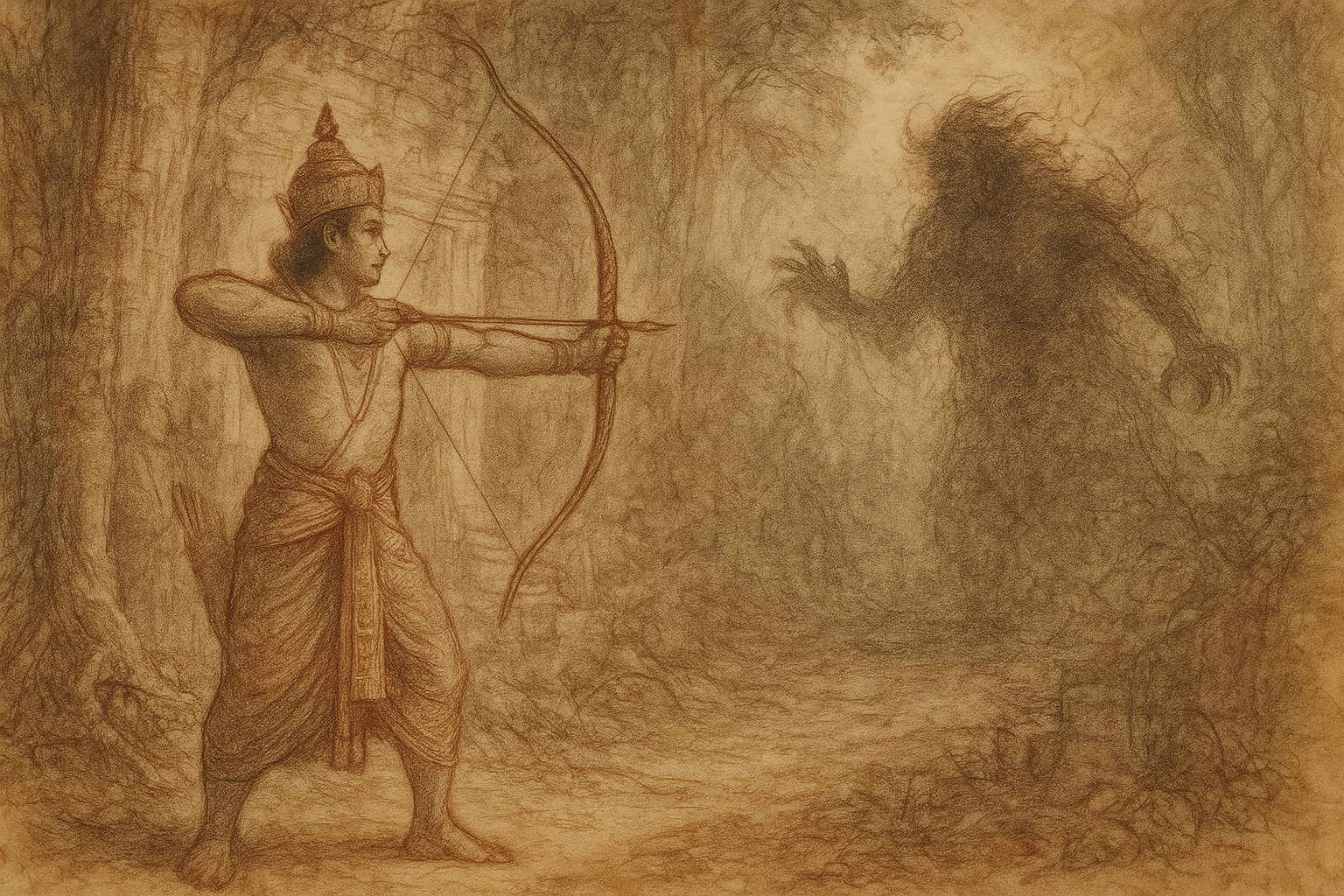
The First Arrow
Sanctuary of Meaning · Artist’s Journal
“He did not yet know death—
but death already knew him.”
—from a field note at Baphuon Temple, eastern gate
—
The forest had once been holy.
Its groves were places of meditation. The birds spoke softly. The deer walked without fear. Stillness hung between the leaves like a prayer that had not yet been spoken.
But now even the trees leaned away from themselves. The wind wandered. The shadows belonged to nothing. And the sky, it was said, had forgotten how to listen.
Into this forest walked a boy with a bow.
His name was Rama. And though born divine, he had not yet been asked to choose between gentleness and justice. He had never known the weight of ending.
At his side walked Lakshmana—fierce, devoted, unswerving.
And before them, the sage Vishvamitra—old, calm,
and sure of what must come.
They came not to slay,
but to restore.
And yet the darkness did not tremble.
It laughed.
—
She was once beautiful, the texts say. A daughter of mountains. A woman of lineage. But something broke—by curse, betrayal, or fury—and her form followed her fate.
Her name was Tataka.
Her voice turned wolves against monks. Her scent withered fruit. Her shadow unmade prayer. She could take any form—but chose none.
She came howling.
Vast. Shifting. Unholy.

Rama Killing Tataka, Baphuon Temple, Angkor, Cambodia
Carved on the eastern gate of Baphuon Temple, this rare Khmer relief shows Rama’s arrow piercing the forehead of Tataka—a moment of still judgment rendered in stone, where divine justice and myth first meet.
Hair like black vines. Arms like thunder. Her son, Maricha, vanished into the trees. The trees bent away. The earth recoiled.
Rama did not.
—
He was still a youth. Not yet crowned. Not yet scarred. Not yet hollowed by loss. But he had made a promise. And the sage had asked him to keep it.
Tataka is no longer a woman, Vishvamitra said.
She is a wound with teeth.
Rama strung his bow. It sang like lightning drawn into shape. He loosed arrow after arrow—cutting away her hands, her strength, her direction.
Lakshmana struck too—severing ears and nose with unflinching precision.
Still she rose.
Wounded. Wailing. Towering.
And so Rama did what the world had waited for him to do.
He stilled the sky.
One arrow.
No words.
He placed it to the string and drew it back until the silence trembled.
Then released.
The arrow flew like pure intention.
Not to wound.
To end.
It struck her head.
She fell like a tree returning to soil.
And the forest, at last, remembered the gods.
—
The texts say Indra rejoiced. That chariots unseen circled above, weaving garlands of praise. That the gods, moved by this first act of justice, offered Rama weapons that sleep inside names.
But Rama did not smile.
It was his first killing.
Though the act was just, and though the demoness monstrous, something irrevocable had crossed into him.
He would never again not know what it meant
to end another’s breath.
And yet in that knowing,
the world became safe again.
The birds returned. The soil softened. The sage said nothing—only began to teach him the weapons of the gods. The kind that never miss. The kind that wait in stories like coiled flame.
But here, at Baphuon, in the quiet carvings of the eastern gate,
it is not the weapons we remember.
It is the boy.
And the bow.
And the demoness whose death made heaven sing.
—
Also in Library
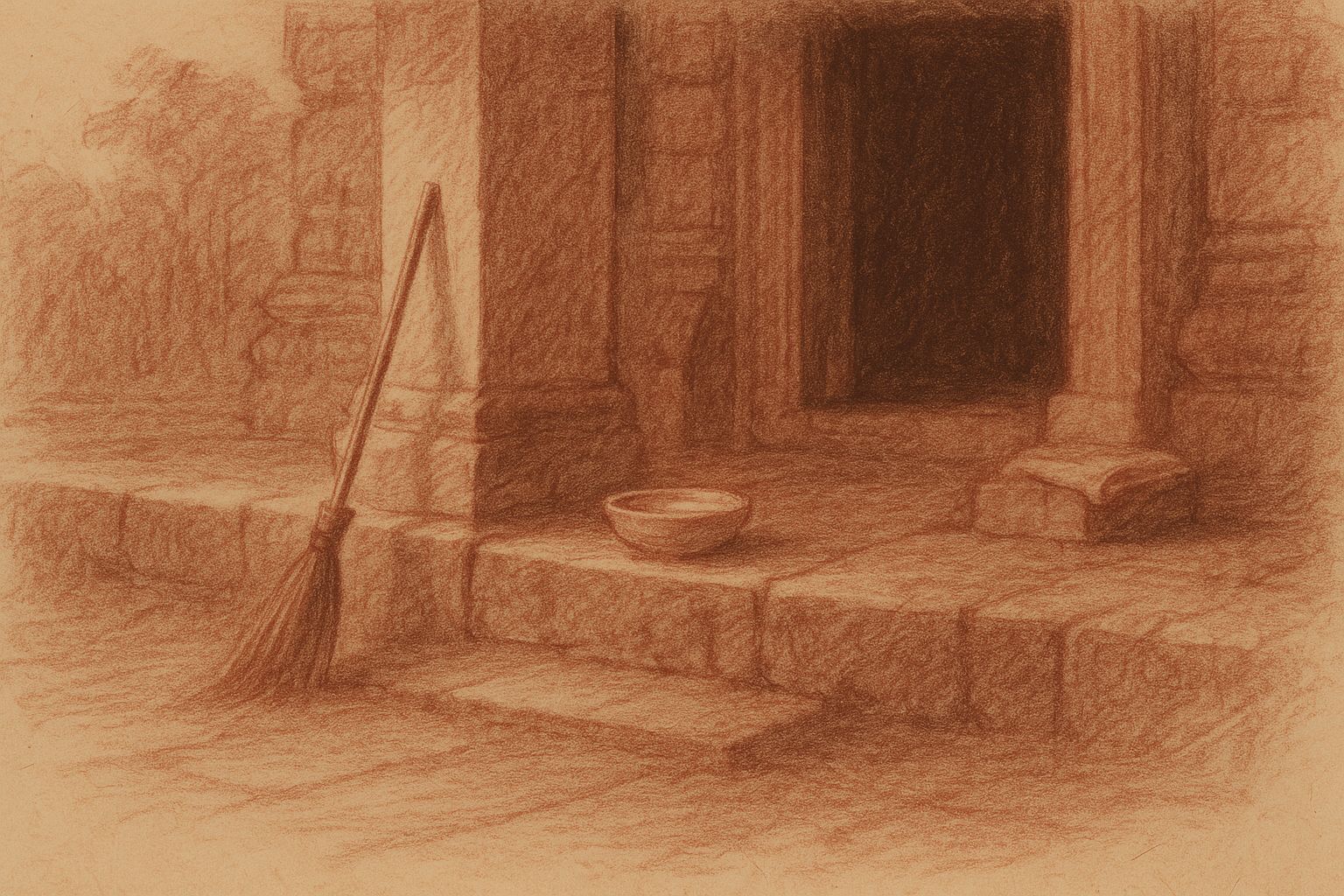
Those Who Keep the Way Open — On the Quiet Guardians of Angkor’s Thresholds
3 min read
Quiet gestures shape the way into Angkor — a swept stone, a refilled bowl, a hand steadying a guardian lion. This essay reflects on the unseen custodians whose daily care keeps the thresholds open, revealing how sacredness endures not through stone alone, but through those who tend its meaning.
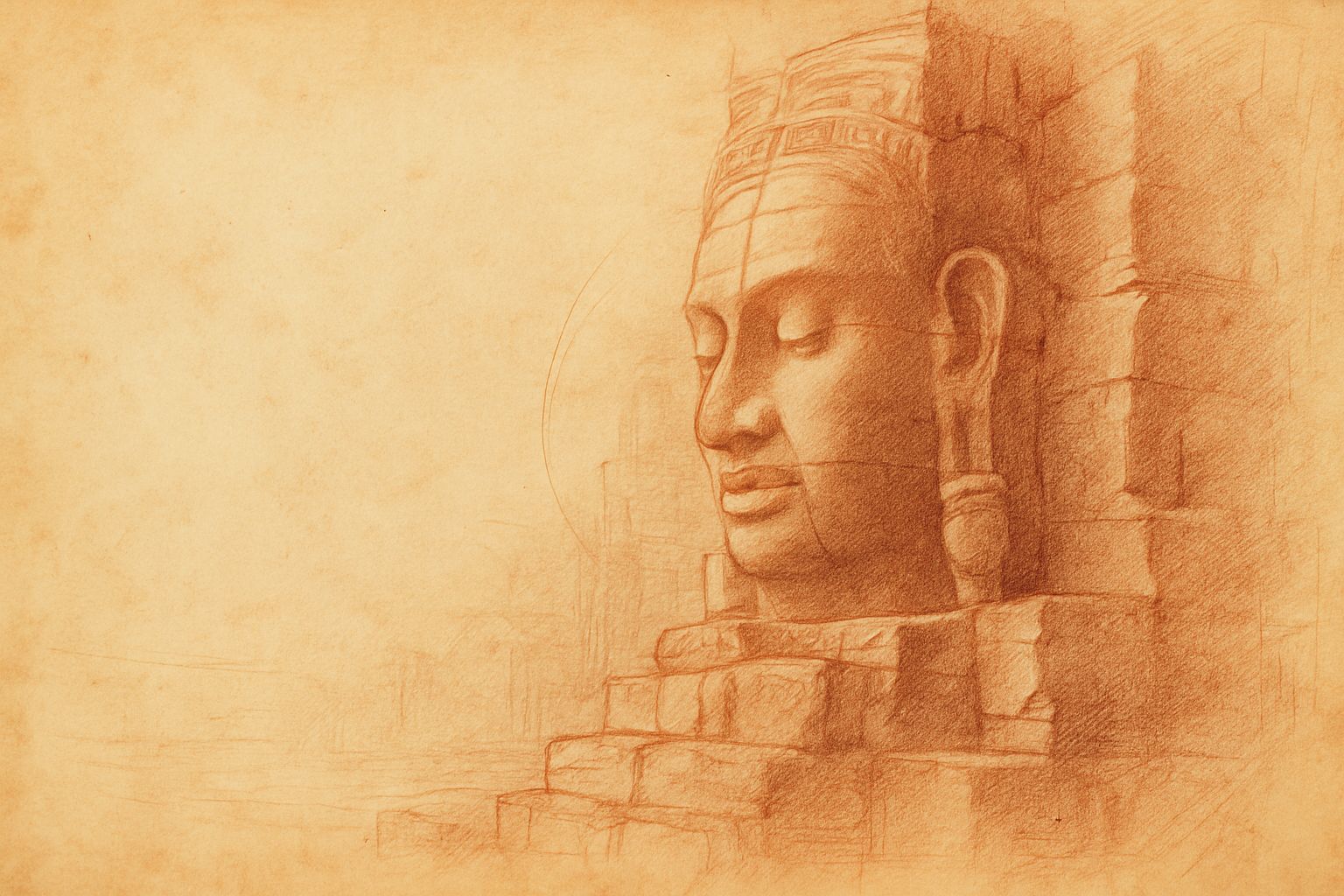
Multiplicity and Mercy — The Face Towers of Jayavarman VII
5 min read
A new vision of kingship rises at the Bayon: serene faces turned to every horizon, shaping a world where authority is expressed as care. Moving through the terraces, one enters a field of steady, compassionate presence — a landscape where stone, light, and time teach through quiet attention.
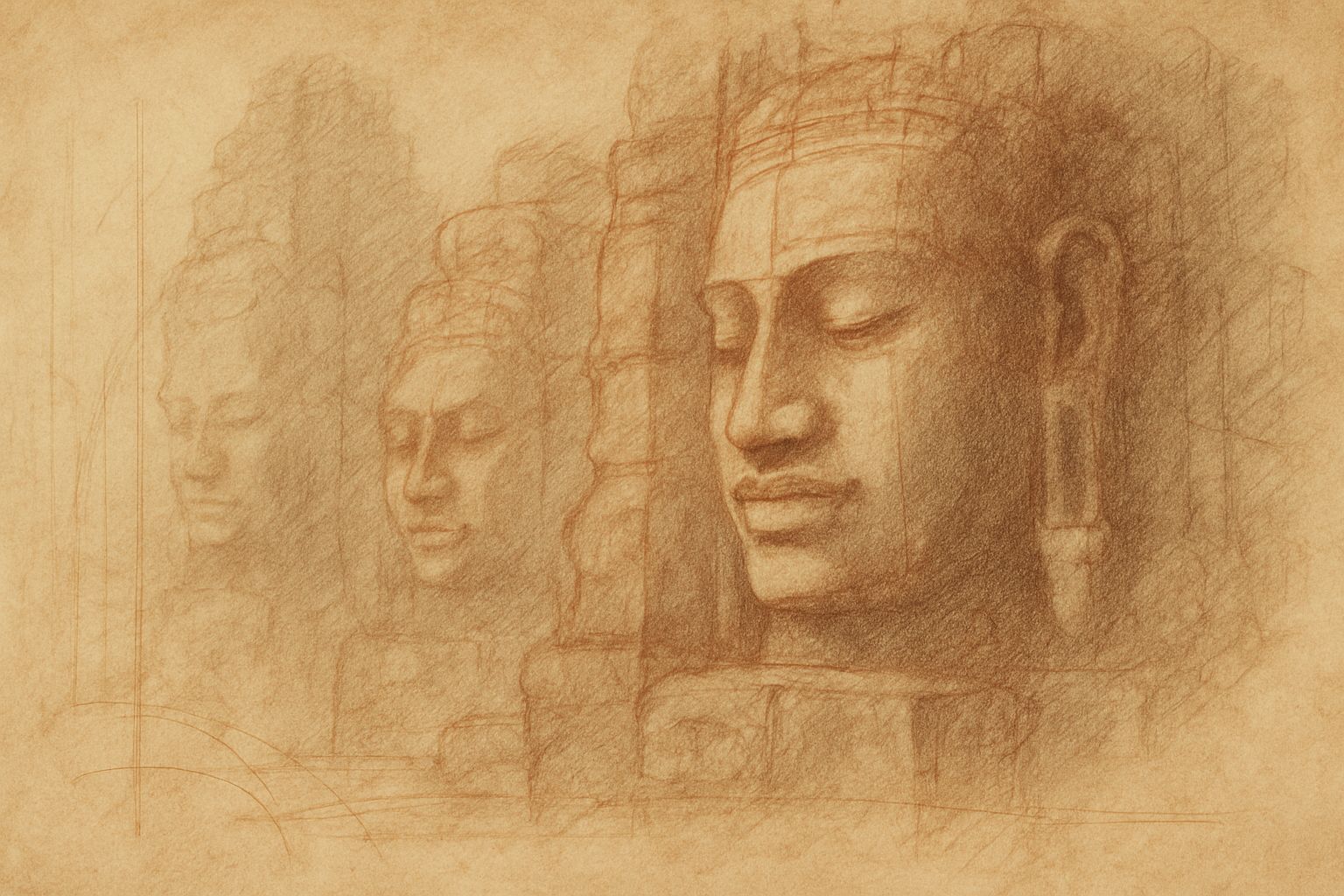
Stone That Dreams
4 min read
Bayon wakes like a mind emerging from shadow. Its many faces shift with light and breath, teaching that perception—and the self—is never singular. In walking this forest of towers, the pilgrim discovers a quiet multiplicity within, held together by a calm that feels both ancient and newly understood.
Join My Studio Journal
Receive occasional letters from my studio in Siem Reap—offering a glimpse into my creative process, early access to new fine art prints, field notes from the temples of Angkor, exhibition announcements, and reflections on beauty, impermanence, and the spirit of place.
No noise. No clutter. Just quiet inspiration, delivered gently.
Subscribe and stay connected to the unfolding story.
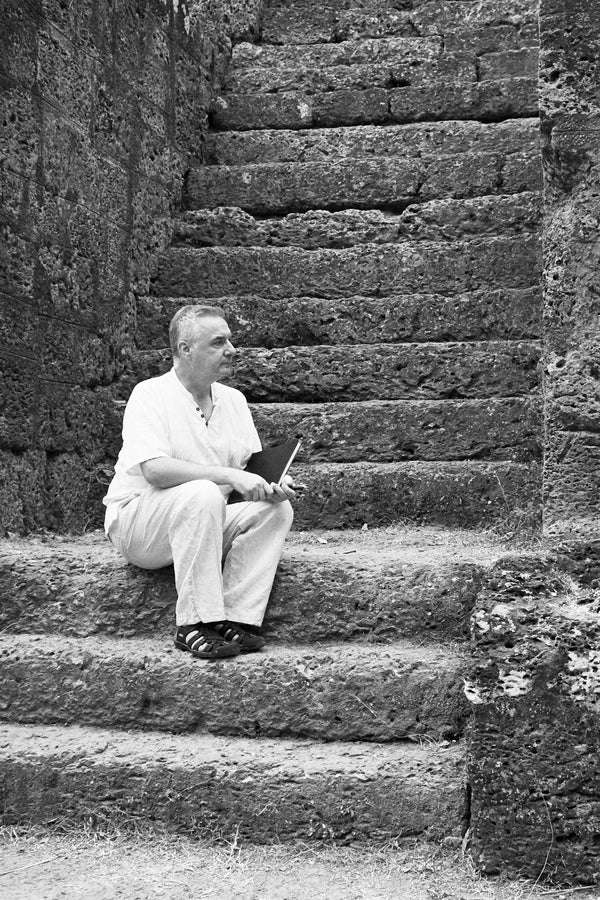
Join My Studio Journal
Receive occasional letters from my studio in Siem Reap—offering a glimpse into my creative process, early access to new fine art prints, field notes from the temples of Angkor, exhibition announcements, and reflections on beauty, impermanence, and the spirit of place.
No noise. No clutter. Just quiet inspiration, delivered gently.
Subscribe and stay connected to the unfolding story.
